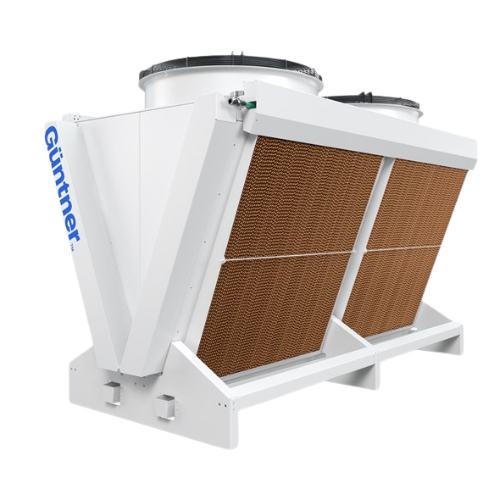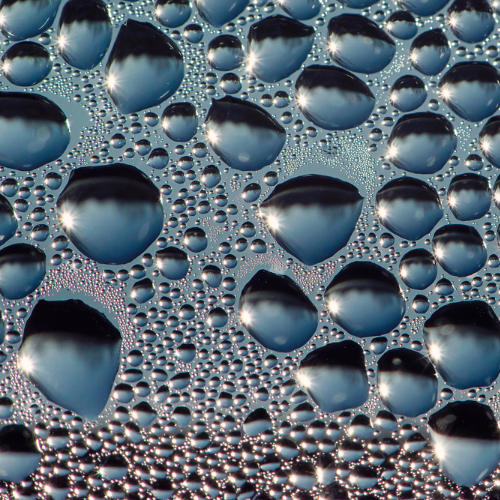1. Air-cooled condensers
Forced air is used as the external medium to reject heat from the system. As the air passes through the coil section, heat is absorbed and released into the ambient.
Adiabatic condensers only use water at peak ambient conditions, therefore significantly reducing water usage compared to evaporative condensers and energy costs as compared to air-cooled condensers. This increased thermal performance at peak ambient conditions may lower the total cost of ownership and reduce compressor energy usage.

An adiabatic condenser (or cooler) is an air-cooled finned heat exchanger with a pre-cooling section that features humidification pads (or water spray nozzles) that help lower the ambient dry bulb temperature prior to entering the coiled heat exchanger section. This then allows for more efficient heat rejection.
The basic principle behind the adiabatic cooling process is that as the water evaporates, the surrounding air becomes cooler and more humid. The adiabatic cooling system pre-cools the air intake of the finned heat exchanger part of the condenser. It is pre-cooled to a temperature approaching the wet bulb temperature as it passes through the cooling pads (without any aerosol formation or water carryover into the finned space).
This process permits a lower entering dry bulb temperature onto the finned heat exchanger’s surface, effectively creating a greater approach and thereby using a smaller finned surface to reach the heat rejection requirements.
There are three main types of condensers that vary based on the condensing medium used to remove heat from the system:
.png?sfvrsn=6122c222_0)
Forced air is used as the external medium to reject heat from the system. As the air passes through the coil section, heat is absorbed and released into the ambient.

A mix of air and water is used as the heat rejection medium. Recirculated water is sprayed over the coils while fans simultaneously blow air through the condenser as part of the heat rejection process.

An adiabatic condenser functions under the same principles as an air-cooled condenser but with the addition of an air humidification process for the air prior to entering the coil, creating a more efficient heat transfer. Adiabatic condensers are available as recirculated, once-through, or spray-type units.
Adiabatic condensers are available in various product lines and capacities, making them suitable for a wide variety of applications and environments. These applications include:

Cooling towers or evaporative condensers use water as the evaporative cooling source throughout the year. However, an adiabatic alternative only uses water at peak ambient conditions, thereby significantly reducing water usage, water treatment, chemicals, sewage and the costs associated with each.

A key benefit is a hygienic operation since there is no need for water treatment with chemicals nor any additional pumps since adiabatic units do not require water recirculation (thus minimizing Legionella risk and operational costs). There is also no concern over water leaks.

Plus, the installation also doesn’t require ice dams, fan belts, shaft bearings, or in cold climates remote sumps, simplicity that can result in lower maintenance.
Before selecting an adiabatic condenser, it’s important to understand the project’s particular ambient temperatures, elevation, heat rejection, superheated vapor temperature, and condensing temperature.
From a financial perspective – in addition to the unit’s initial cost – the long-term operational costs as compared to other cooling solutions should also be considered when selecting an adiabatic option.
Here are some things to keep in mind when installing an adiabatic condenser: